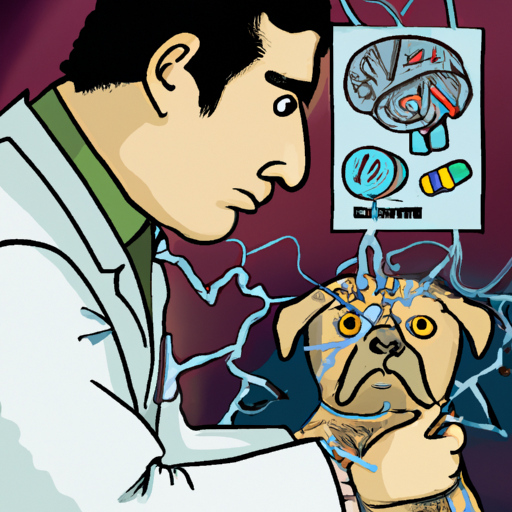As a caregiver, your pet’s health is your topmost priority. In this guide, we’ll take a journey together to understand how you can test your dog for neurological disorders. The road may seem winding and complex, but don’t worry. We’re here to navigate it together.
H2: Understanding the Basics of Canine Neurology
Canine neurology is a vast field, but don’t let that intimidate you. Essentially, it’s about the nervous system, which comprises the brain, spinal cord, and nerves. Neurological disorders occur when this system is disrupted.
Common symptoms of neurological disorders in dogs include:
- Difficulty walking
- Seizures
- Loss of balance
- Changes in behavior
Remember, these symptoms could also indicate other health issues. It’s crucial to get a professional diagnosis.
H2: The Role of a Veterinarian in Diagnosis
Your vet is your ally. They have the training and tools necessary to diagnose neurological disorders. Typically, they will:
- Perform a thorough physical examination
- Conduct a neurological examination, which might involve tests like reflex checks, balance tests, and more
- Order additional tests like blood work, MRI, or CT scan
It’s important to give your vet as much information as possible. This can help them narrow down the possible disorders and decide on the best course of action.
H2: Common Neurological Disorders in Dogs
There are several disorders your dog could be dealing with. Table 1 below shows some common ones:
| Disorder | Symptoms | Treatment |
|---|---|---|
| Epilepsy | Seizures, Loss of consciousness | Medication |
| Vestibular Disease | Loss of balance, Head tilt | Depends on cause |
| Degenerative Myelopathy | Weakness in hind legs, Difficulty walking | Physical therapy, Assistive devices |
| Stroke | Sudden loss of balance, Unusual eye movements | Depends on cause and severity |
H2: Living with a Dog with a Neurological Disorder
If your dog is diagnosed with a neurological disorder, it’s not the end of the world. With your love and care, your dog can still lead a happy, fulfilling life. Here are some tips:
- Follow your vet’s treatment plan closely
- Keep your home safe and comfortable for your dog
- Be patient and understanding
- Seek support from communities of other pet owners dealing with similar issues
H2: Preventing Neurological Disorders in Dogs
While you can’t prevent all neurological disorders, certain steps can reduce the risk:
- Regular vet check-ups
- A balanced diet
- Plenty of exercise
- Avoiding toxins and injuries
FAQ
Q: Can neurological disorders in dogs be cured?
A: Some disorders can be managed with treatment, but others might not be curable. It depends on the specific disorder and its severity.
Q: How long can a dog live with a neurological disorder?
A: With proper care and management, dogs with neurological disorders can continue to live for many years. It varies based on the disorder and the dog’s overall health.
Q: Are neurological disorders in dogs painful?
A: Some disorders might cause discomfort or pain, while others might not. Your vet can help manage any pain or discomfort your dog might be experiencing.
Q: Can a dog recover from a neurological disorder?
A: Recovery depends on the specific disorder and its severity. In some cases, dogs can recover fully, while in others, the focus might be on managing the symptoms and improving quality of life.
Q: What causes neurological disorders in dogs?
A: Causes can range from genetic factors to injuries, infections, and exposure to toxins. In some cases, the cause might not be known.
Remember, you’re not alone in this journey. With knowledge, patience, and the right support, you can give your dog the best possible care. And that’s what being a caregiver is all about.



